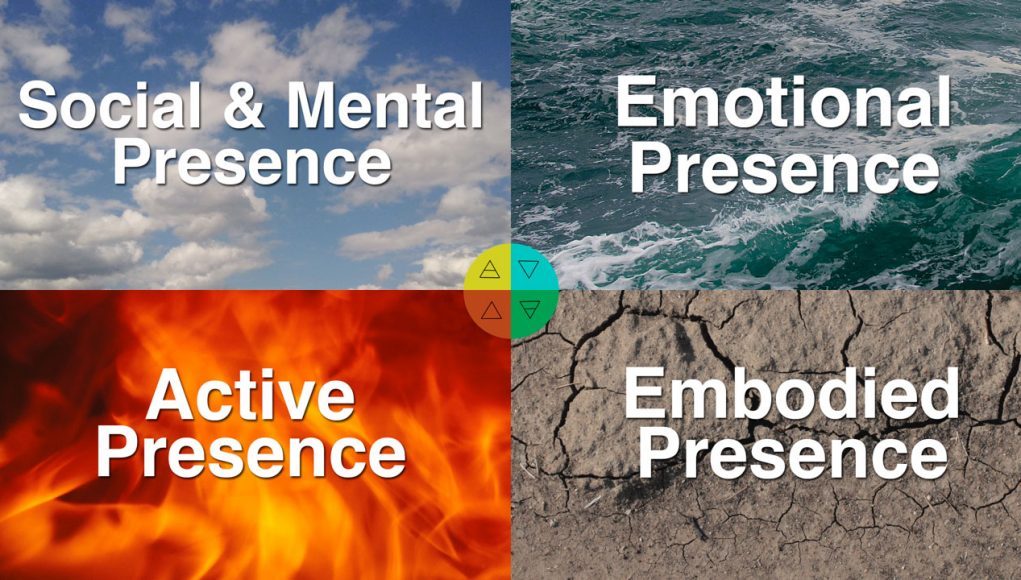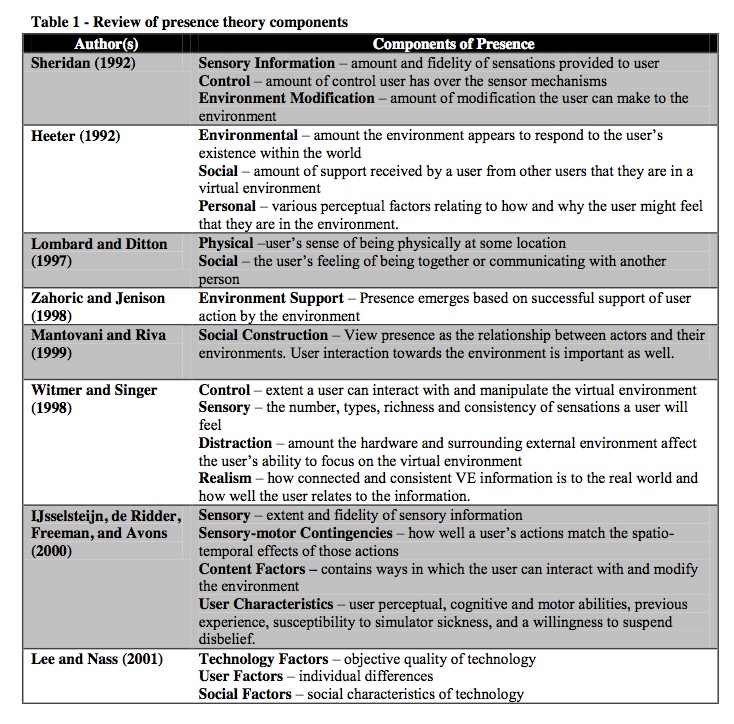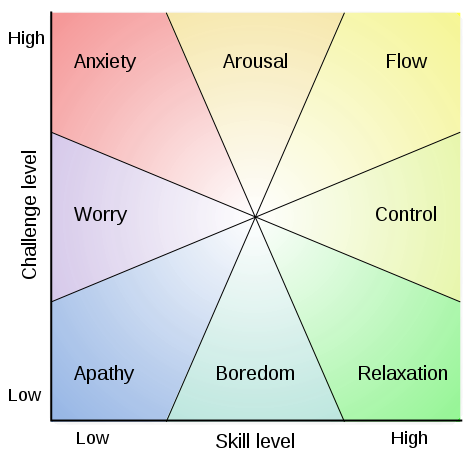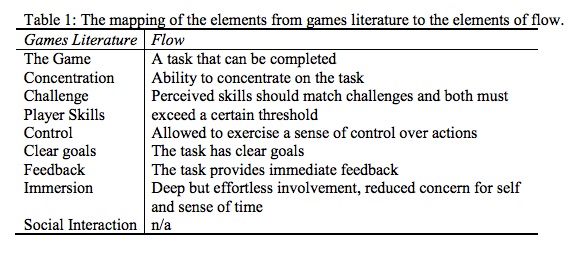A Survey of Presence Research
Chertoff has a lot of other references to Presence research, the evolution of experience economies, insights from the user-system-experience (USE) model of user-centered design, as well as combining game design theory with flow theory with GameFlow.
Here’s a graphic of his survey of Presence research as of 2009, where he summarizes the major components of Presence in the different major models:
Chertoff argues that a lot of these models don’t have a good conceptual framework that can account for role of content in cultivating a sense of immersion and Presence, and he sees that Experiential Design and Flow Theory can fill in those gaps.
Flow theory shows the relationship between the objective skills of a user and the objective challenges within an experience that result in a variety of different internal subjective states in the user.
When the skill and challenge is low, then that can lead to apathy or boredom. When the challenges are high, but the skill is low, then it can create anxiety or arousal. Flow states happen in a sweet spot of high skill of the user and high challenge within the experience. Flow theory has been applied to Game Design in the GameFlow theory, which shows the role of content in creating a sense of immersion and Presence.
Anyone interested in different frameworks and models of experience will find a wealth of references in Chertoff’s three papers: Improving Presence Theory Through Experiential Design (2008), “Exploring Additional Factors of Presence (2009), and Virtual Experience Test: A virtual environment evaluation questionnaire (2010).










